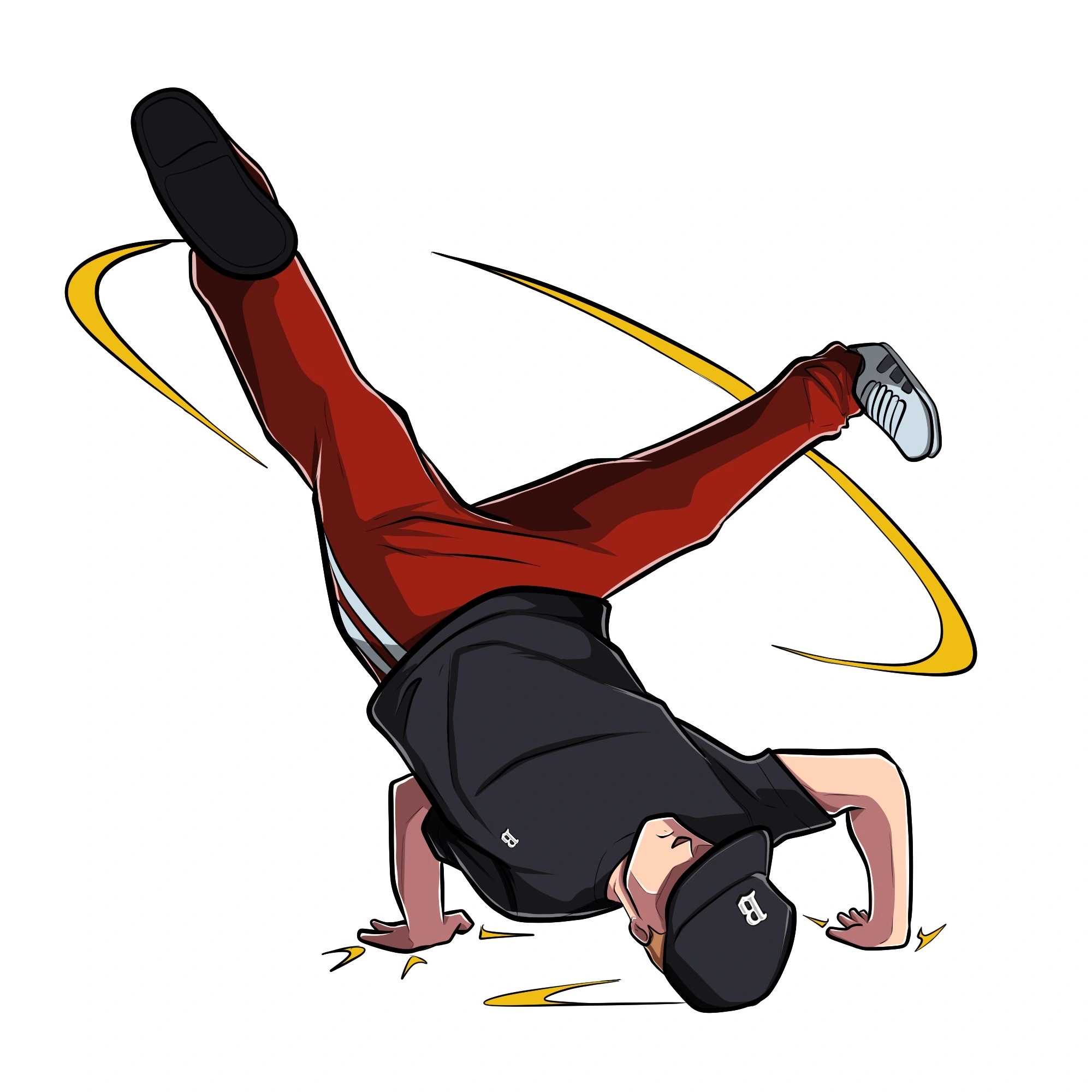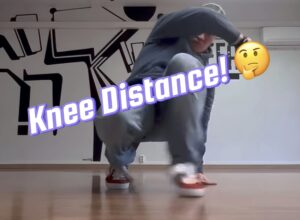Learning how to do halos is the next step after mastering windmills. Many b-boys and b-girls start halos to transition from a windmill into this move and sometimes back to windmill. If you’re ready to jam with the halo move, you should start by practicing how to do a windmill.
Every novice breaker wants to perform incredible moves when learning how to breakdance, but it’s vital to do it safely. We recommend getting a teacher who not only knows how to do halos but also how to keep you safe while doing so.
If you’re ready to start jamming, here’s your guide on how to do halo moves.
What is the Halo Move?
The halo move involves a breaker creating a circular motion with their legs while balancing on the edges of their heads. As they spin, their legs give off the appearance of a halo. As expected, halos require tremendous control, balance, and strength.
It’s an advanced move, so if you already know how to do a flare or windmill, you can add the halo move to your repertoire.
In other words, while a newbie learning how to breakdance may see similarities between the two, they both present different challenges. Either way, expect to master your foundation before practicing this move.
The History of Halos
The halo is a product of breaking’s golden age of the early 1980s. In the history of breakdance, this period saw several moves cemented in the scene and some of its most prominent personalities making their names, including Crazy Legs and Ken Swift.
The man behind this iconic move was Icey Ice, who performed it for the first time in 1983. The name is derived from how the head is rolled to resemble an angel’s halo. The name became a regular fixture among the top b-boys by 1985.
At its heart, a halo is the head rotating clockwise while stabbing with the right hand or the head rotating counter-clockwise while stabbing with the left hand. Anything else is considered a variation.
Several variations have emerged over the years as people level up their breaking skills, including:
- Double Halo – A type of halo move involving two rotations before the hands touch the ground. Some b-boys have extended this to triple and quadruple halos, including Orko and Lil Cesar.
- Drilled Halo – Known as a deadman or straight-leg halo, this variation involved keeping the legs straight and together.
- Inside Halo – Otherwise called the reverse halo, this is the same as a regular halo but performed clockwise while stabbing with the left hand, and vice-versa.
- One–Hand H – Originally performed by Lil Alex of the New York City Breakers in 1984, this halo uses only a single hand touching the ground.
- Shoulder Halo – This halo involves starting on a single shoulder and ending on the other shoulder. The hands never touch the ground with this variation.
Halos breakdance moves can be mixed and matched according to the breaker. Once you can perform a standard halo, you can incorporate some of the above variations into your arsenal.
How to Do Halos for Beginners
Setting up for a halo requires moving through the motions to achieve the gradual speed, momentum and control required to pull off the halos breakdance move safely. Remember, style vs. power isn’t the debate. Instead, it’s all about control and confidence.
Grab your breaking shoes and follow this step-by-step tutorial for performing your first halo.
Step One – Practice Your Handstand
The core of a halo is the handstand itself. Pulling off this move is out of your reach until you can perform and hold a handstand easily.
As part of your first drill, practice getting into the handstand. Ensure your hands are shoulder-width apart, and don’t be afraid to use a wall or a great breaking teacher as a spotter to get started.
Step Two – Get Used to the Leg Motion
While in the handstand position, practice leg lifts. This is no more than lifting and lowering your legs while maintaining your static position. Since the circular motion of the legs is vital to how to do the halo move, getting used to moving them while in a handstand is essential.
Mastered leg lifts? Then, it’s time to perform the circular motion fundamental to why a halo equals fresh breaking. From the headstand position, move your legs in a circular motion. Imagine you’re trying to draw a smooth circle in the air in the form of a halo.
Step Three – Put it All Together
Doing a headstand and the circular motions with your legs represents the basics of the halo move. Now, it’s time to put everything together.
Follow these transitions to connect everything and complete your first halo:
- Starting Position – Start in your usual b-boy stance. If you want to ramp up the difficulty, feel free to use your footwork essentials to dance into your starting position as if you were in the middle of a routine.
- Hand Placement – Squat and place your hands on the ground, shoulder-width apart, with your palms flat and fingers spread. Your wrists should be directly under your shoulders
Get into your Turtle freeze – Add a slide with your head at the side while your rotate your legs
Push your hips up simultaneously and try to rotate around a full rotation returning to your turtle freeze or float position.
Remember you must learn how to do the windmill first in order to learn the halo, because the halo is like a windmill with your head on the ground instead of your back.
Draw Halos and Become the Best Breaker at the B-Boy & B-Girl Dojo
The art of becoming a better b-boy or b-girl is practice, progression, and persistence. Practicing at home is always helpful, but working with an experienced breaker who can show you the secrets of pulling off the biggest and best moves is the fastest way to improve.
At the B-Boy & B-Girl Dojo, we provide expert instruction for breakers at every stage of their breaking careers. If you’re ready to jam like never before, sign up for some of our premium courses today.









